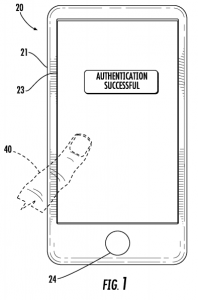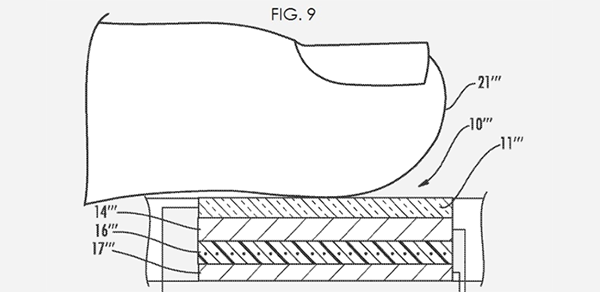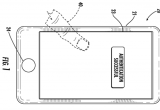Apple issued patent for Touch ID biometric touch screen
Authentec founder Dale Setlak creates new sensor, brings adaptive authentication to iPhones
18 May, 2017
category: Biometrics
Apple was issued a patent for a fingerprint biometric touch screen – essentially a sensor or series of capacitive sensors built into a touch display – opening the door for the long rumored next generation of its Touch ID sensor. Though the design is certainly far more complicated, the concept is straightforward – allow the biometric to be read during normal interaction with the touch screen by removing the current dedicated sensor and instead layer it into the screen itself.
This idea adds both convenience and security for the user as there is no longer a need for dedicated presentment of the fingerprint and it enables constant, or at least ongoing, authentication in the background.
It also reclaims valuable real estate on the handset, as there is no longer the requirement for dedicated sensor space at the bottom of the device. This newly freed up space opens the door for another of the rumored Apple changes – a true edge-to-edge display.
 The patent titled, “Electronic device including finger biometric sensor including transparent conductive blocking areas carried by a touch display and related methods,” was originally filed in Jan. 2015. Its inventor is none other than Dale Setlak, inventor of the original TouchID sensor. Setlak is the co-founder of the pioneering biometric company, Authentec, which was acquired by Apple back in 2012. Post acquisition, he has continued to work for Apple, engineering biometric sensor advancements.
The patent titled, “Electronic device including finger biometric sensor including transparent conductive blocking areas carried by a touch display and related methods,” was originally filed in Jan. 2015. Its inventor is none other than Dale Setlak, inventor of the original TouchID sensor. Setlak is the co-founder of the pioneering biometric company, Authentec, which was acquired by Apple back in 2012. Post acquisition, he has continued to work for Apple, engineering biometric sensor advancements.
While the new patent is for the application of the sensor in the biometric touch screen, it does hint to its ultimate use for adaptive or passive authentication. “Where a fingerprint sensor is integrated into an electronic device … it may be desirable to more quickly perform authentication, particularly while performing another task or an application on the electronic device. In other words, in some instances it may be undesirable to have a user perform an authentication in a separate authentication step, for example switching between tasks to perform the authentication.”
Here is the abstract from the newly issued patent:
“An electronic device may include a touch display including at least one display layer, and at least one transparent conductive layer thereon defining touch sensing pixels. The electronic device may also include a finger biometric sensor carried by the touch display and that includes a finger biometric sensing layer including an array of transparent conductive finger biometric sensing pixels capacitively coupled to the at least one transparent conductive layer of the touch display. The finger biometric sensor may also include switchable transparent conductive blocking areas between the finger biometric sensing layer and the at least one transparent conductive layer of the touch display and may be selectively switchable between blocking and reading states.”




